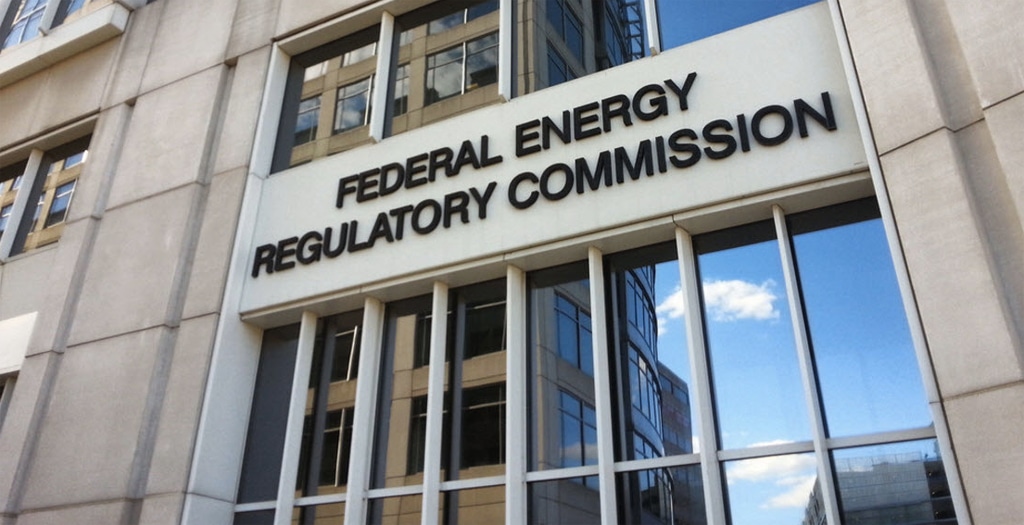The Senate on Monday voted to confirm Mark Christie and Allison Clements to the Federal Energy Regulatory Commission (FERC), bringing the agency to a full five members for the first time in nearly two years.
“These are strong appointments,” Rob Gramlich, founder and president of Grid Strategies, a consulting firm that helps clients understand the opportunities and barriers to integrating clean energy into the grid.
Whereas Clements is a former senior attorney for the National Resources Defense Council and policy adviser for the Energy Foundation, Christie is a former commissioner at Virginia’s State Corporation Commission.
“He’ll come with a good sense of the needs of state policy makers,” said Jeff Dennis, managing director and general counsel at Advanced Energy Economy, an industry association focused on transforming public policy to enable rapid growth of advanced energy businesses. Commissioners with state policy regulatory experience have been in short supply at FERC for the last few years, other officials noted.
Having five voices contributing to Commission’s work and developing policies is also a welcomed change. “For the first time in years, FERC will have a full, bipartisan complement of five commissioners,” Gregory Wetstone, president and CEO of the American Council on Renewable Energy said, expressing his hope that this reinvigorated FERC will look anew at how to achieve the long overdue regulatory reforms needed to accelerate the country’s energy transition.
Energy officials are hopeful that a full committee might be more willing to take on big policy changes.
Clements and FERC Commissioner Richard Glick, who until Clements’s confirmation this week was FERC’s lone Democrat, are both tipped to replace FERC’s current chair Commissioner James Danly during the Biden administration.
Commissioner Danly was installed as FERC’s chair less than a month ago, after the Trump administration ousted FERC Commissioner Neil Chatterjee from his post as FERC’s chairman. Chatterjee’s demotion came with little explanation, but it was seen as a rebuke for accepting a petition that asked FERC to look at the intersection of carbon pricing and the markets that it oversees. During a keynote speech at an industry conference in September, then-Chairman Chatterjee expressed enthusiasm for exploring carbon pricing.
Agenda setting
Until Commissioner Chatterjee’s term ends in June, FERC will have a Republican majority, but the Biden administration is expected to nominate a Democrat as Chatterjee’s replacement, flipping the majority over. President-elect Biden is also expected to appoint a Democrat as FERC Chair early next year.
Glick is favored to lead FERC, partly because he already serves on the Commission, but Clements’s clean energy pedigree and the Biden administration’s interest in having more women in agency-leading roles mean that she is also a likely nominee.
Ultimately, FERC’s chairman – or chairwoman – will set the agenda, officials say, each noting that there are a host of substantive issues to tackle.
According to several energy industry officials, transmission planning and policy should be the new Commission’s top priority. “It’s also important to review how resource planning adequacy is determined and within that how state policies are integrated into RTO resource adequacy [processes],” Gramlich said.
Regulations around hybrid storage and generation and rules around storage as transmission are among the main issues that the Energy Storage Association (ESA) would like to see FERC take on, Kelly Speakes-Backman, the ESA’s CEO said. The ESA would also like to see PJM capacity accreditation for storage approved, and it would like to see market design incorporate the value of flexibility, she added.
Given the new composition of the Commission and FERC’s proposed policy statement on carbon pricing, some officials think that FERC might use its jurisdiction to consider market rules for carbon pricing to broaden the conversation and allow Regional Transmission Organizations (RTOs) and Independent System Operators (ISOs) to accommodate other state market reforms and policies, including renewable portfolio standard mandates for achieving states’ environmental goals.
This content is protected by copyright and may not be reused. If you want to cooperate with us and would like to reuse some of our content, please contact: editors@pv-magazine.com.








Is FERC usually controlled by the outgoing party for 6 months after the election? Seems like most things like this the people usually step down so the incoming admin can have control.
It doesn’t seem like Chatterjee has been horrible which is probably why he was demoted.
FERC also needs to deal with a very old issue. According to the “settled law” of Habersham Mills vs FERC, grid-tied electric generators affect interstate commerce. This is why even tiny home scale micro hydro needs the same FERC license as a 5 MW powerplant, yet solar PV, wind-electric, and other renewables grid tie every day, even at MW capacities without any FERC involvement. FERC needs to require federal licensing for ALL grid tied generators ( as per Habersham Mills vs FERC) or take the licensing requirement away from hydro. The US DOE claims that there is 65 GW of untapped small and micro hydro in the US and most of this will go unused largely because of FERC’s suffocating discriminatory policies